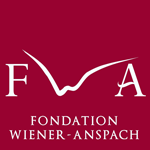Au cours de l’année dernière, nous avons eu le plaisir d’être informés par des lauréats, lauréates et Alumni de la Fondation de la publication d’articles liés à leurs recherches. Nous les remercions et leur souhaitons une nouvelle année tout aussi fructueuse !
 Laura Alvarez (Docteure en Histoire, Histoire de l’Art et Archéologie, ULB) a récemment conclu un séjour de deux ans à l’Université de Cambridge, où elle a mené des recherches sur le thème « Se plonger dans l’âge du bronze à travers le miroir. Une étude des miroirs à Chypre aux 13e-12e s. av. J.-C. ». En mai 2024 elle a publié avec Rainer Feldbacher, Yuko Miyauchi, Kirsi Lorentz et Peter M. Fischer un article intitulé « An Aegean Mirror from Hala Sultan Tekke, Cyprus » dans l’Oxford Journal of Archaeology (volume 43, numéro 2).
Laura Alvarez (Docteure en Histoire, Histoire de l’Art et Archéologie, ULB) a récemment conclu un séjour de deux ans à l’Université de Cambridge, où elle a mené des recherches sur le thème « Se plonger dans l’âge du bronze à travers le miroir. Une étude des miroirs à Chypre aux 13e-12e s. av. J.-C. ». En mai 2024 elle a publié avec Rainer Feldbacher, Yuko Miyauchi, Kirsi Lorentz et Peter M. Fischer un article intitulé « An Aegean Mirror from Hala Sultan Tekke, Cyprus » dans l’Oxford Journal of Archaeology (volume 43, numéro 2).
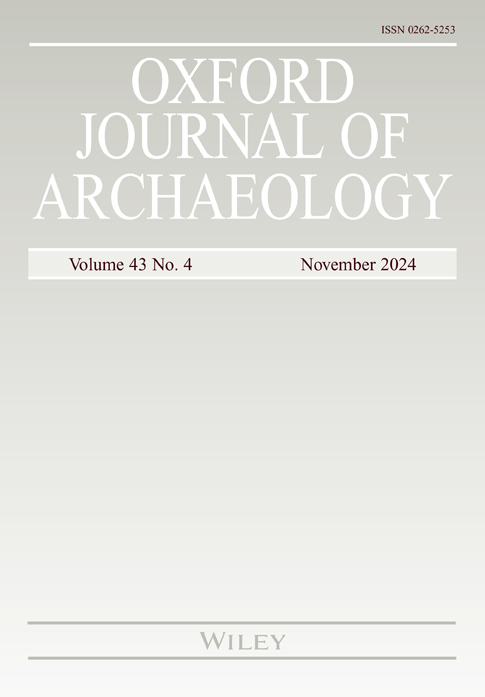 Abstract
Abstract
This study deals with the results of the 2023 fieldwork at the extramural cemetery of the Late Bronze Age harbour city of Hala Sultan Tekke. One of the three excavated tombs in 2023 was the undisturbed Chamber Tomb XX, which is dated around 1300 BC. It contained a riveted bronze mirror, a rare type in Cyprus at that time, which is part of a mortuary context of four individuals out of a total of 17 individuals and 264 complete objects, many of them imported from a vast area, which includes the Mycenaean, Minoan, Egyptian and Levantine cultures. The current paper presents this mirror and associated contexts. As regards the provenance of the mirror, the Aegean is suggested as the area of manufacture, and more precisely Crete, suggesting potential evidence of direct contact between individuals from Crete and Hala Sultan Tekke.
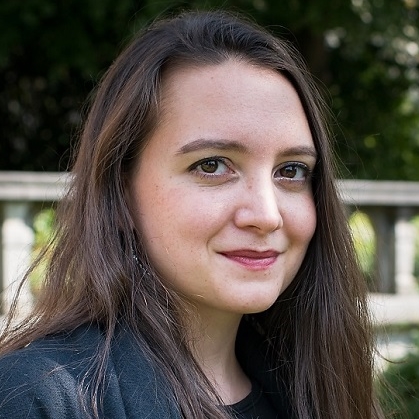 Également titulaire d’une bourse postdoctorale de la Fondation de 2022 à 2024, Marie Linos (Docteure en Histoire, Histoire de l’Art et Archéologie, ULB) a travaillé à l’Université d’Oxford sur un projet intitulé « La science conjuguée : les couples savants britanniques et la fabrique d’une science sociale transatlantique (1890-1940) ». Dans un article paru dans le Journal of the History of the Behavioral Sciences, elle retrace l’histoire des premières chercheuses ayant bénéficié des subsides postdoctoraux du Social Science Research Council (“Professional opportunities, gender obstacles, and narrowed progression: The case of the first Social Science Research Council female fellows (1925–1934)”, volume 60, numéro 4, automne 2024). Aujourd’hui Marie Linos est Attachée temporaire d’enseignement et de recherche en Sciences de l’Éducation à l’Université Picardie Jules Vernes, à Amiens.
Également titulaire d’une bourse postdoctorale de la Fondation de 2022 à 2024, Marie Linos (Docteure en Histoire, Histoire de l’Art et Archéologie, ULB) a travaillé à l’Université d’Oxford sur un projet intitulé « La science conjuguée : les couples savants britanniques et la fabrique d’une science sociale transatlantique (1890-1940) ». Dans un article paru dans le Journal of the History of the Behavioral Sciences, elle retrace l’histoire des premières chercheuses ayant bénéficié des subsides postdoctoraux du Social Science Research Council (“Professional opportunities, gender obstacles, and narrowed progression: The case of the first Social Science Research Council female fellows (1925–1934)”, volume 60, numéro 4, automne 2024). Aujourd’hui Marie Linos est Attachée temporaire d’enseignement et de recherche en Sciences de l’Éducation à l’Université Picardie Jules Vernes, à Amiens.
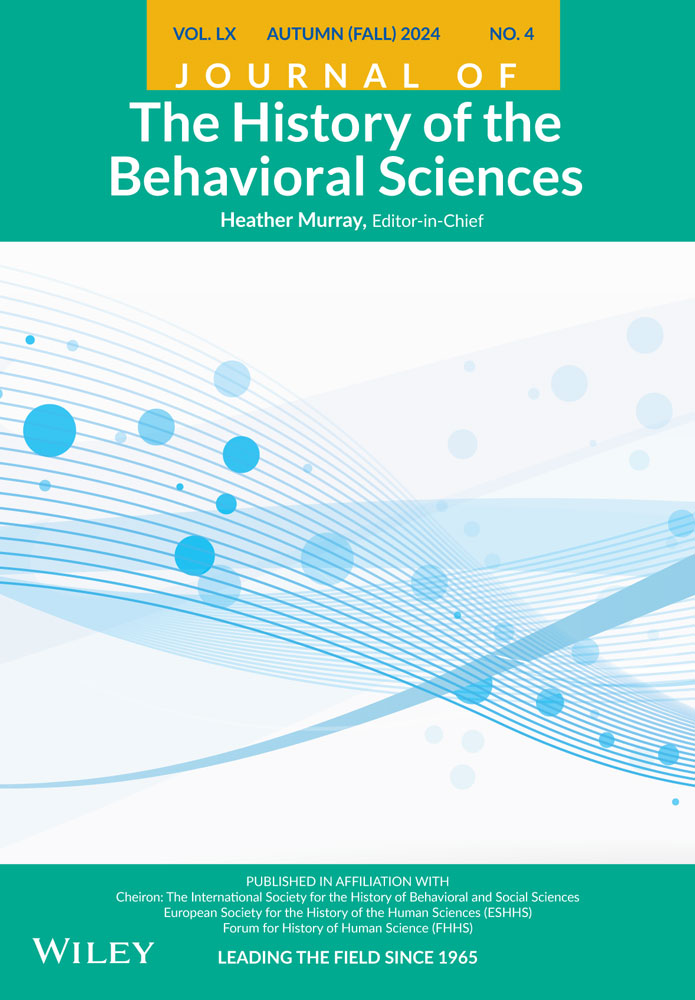 Abstract
Abstract
Between the years 1925 and 1934, the Social Science Research Council (SSRC) awarded 198 postdoctoral research fellowships to early-career social scientists, among which 29 were awarded to women. This article, which is based on the SSRC directory and Rockefeller institutions’ records, examines the professional paths of these female fellows to shed light on the presence of women in the social sciences and to probe the peculiarities of their professional trajectories. The SSRC fellowships represented a significant professional prospect for brilliant young female graduates who were often denied similar opportunities in other fields. Nonetheless, they did not eradicate all gender discrimination that remained prevalent, not only in the vertical sense by preventing women from progressing in the academic hierarchy, but also in the horizontal sense by retaining them in designated spaces (specific disciplines or institutions) that were underrecognized. Ultimately, the analysis of women’s professional paths underscores the importance of examining the private or intimate lives of scientists to gain a more in-depth understanding of the social structure of science and its impact on its protagonists.
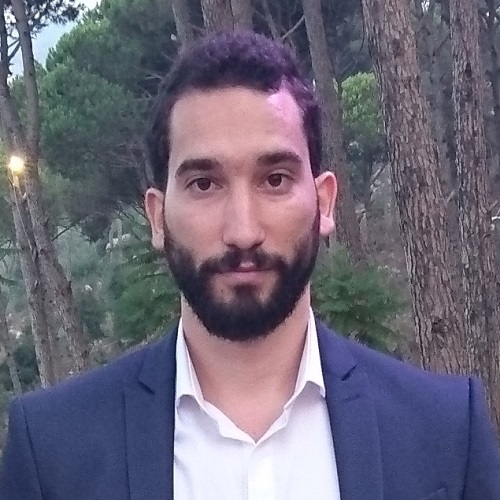 Michael Jabbour (Docteur en Sciences de l’Ingénieur et Technologie, ULB) a été titulaire d’une bourse postdoctorale de la Fondation de 2018 à 2020 à l’Université de Cambridge, où il a travaillé sur un projet de recherche intitulé « Relations de majorization et inégalités entropiques pour l’évaluation des capacités des canaux quantiques bosoniques ». Écrit avec Koenraad Audenaert, Bjarne Bergh, Nilanjana Datta, Ángela Capel et Paul Gondolf, son article « Continuity bounds for quantum entropies arising from a fundamental entropic inequality » est paru sur arxiv en octobre 2024.
Michael Jabbour (Docteur en Sciences de l’Ingénieur et Technologie, ULB) a été titulaire d’une bourse postdoctorale de la Fondation de 2018 à 2020 à l’Université de Cambridge, où il a travaillé sur un projet de recherche intitulé « Relations de majorization et inégalités entropiques pour l’évaluation des capacités des canaux quantiques bosoniques ». Écrit avec Koenraad Audenaert, Bjarne Bergh, Nilanjana Datta, Ángela Capel et Paul Gondolf, son article « Continuity bounds for quantum entropies arising from a fundamental entropic inequality » est paru sur arxiv en octobre 2024.
Le Dr Jabbour a été nommé en décembre 2024 Maitre de conférences en communications quantiques à Télécom SudParis, Institut Polytechnique de Paris. Pour plus d’informations sur son parcours et ses recherches, vous pouvez visiter sa page personnelle.
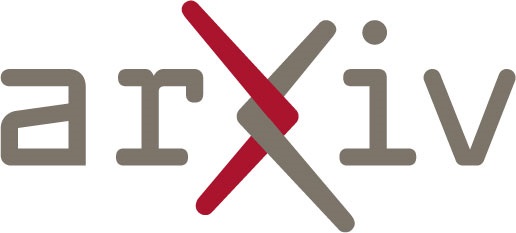 Abstract
Abstract
We establish a tight upper bound for the difference in von Neumann entropies between two quantum states, ρ1 and ρ2. This bound is expressed in terms of the von Neumann entropies of the mutually orthogonal states derived from the Jordan-Hahn decomposition of the difference operator (ρ1−ρ2). This yields a novel entropic inequality that implies the well-known Audenaert-Fannes (AF) inequality. In fact, it also leads to a refinement of the AF inequality. We employ this inequality to obtain a uniform continuity bound for the quantum conditional entropy of two states whose marginals on the conditioning system coincide. We additionally use it to derive a continuity bound for the quantum relative entropy in both variables. Interestingly, the fundamental entropic inequality is also valid in infinite dimensions.
 Amdemichael Tadesse (Docteur en Sciences, ULB) est actuellement boursier postdoctoral de la Fondation à l’Université d’Oxford, où il a entamé sa deuxième année de recherches sur le thème « Évolution des volatils d’un système magmatique riche en silice dans le Rift éthiopien : analyse des apatites de Tullu Moye », auprès des Professeurs David Pyle et Tamsin Mather (Department of Earth Sciences). En décembre 2024, avec ses collègues Karen Fontijn, Paul A. Wallace, Lucia Gurioli, Priya Laha, Herman Terryn et Dereje Ayalew, il a publié le quatrième et dernier article issu de sa thèse doctorale, intitulé « Eruption style and dynamics of the ~ 87 ka Baricha peralkaline rhyolite eruption in Ethiopia » (Bulletin of Volcanology, Volume 86, Issue 1).
Amdemichael Tadesse (Docteur en Sciences, ULB) est actuellement boursier postdoctoral de la Fondation à l’Université d’Oxford, où il a entamé sa deuxième année de recherches sur le thème « Évolution des volatils d’un système magmatique riche en silice dans le Rift éthiopien : analyse des apatites de Tullu Moye », auprès des Professeurs David Pyle et Tamsin Mather (Department of Earth Sciences). En décembre 2024, avec ses collègues Karen Fontijn, Paul A. Wallace, Lucia Gurioli, Priya Laha, Herman Terryn et Dereje Ayalew, il a publié le quatrième et dernier article issu de sa thèse doctorale, intitulé « Eruption style and dynamics of the ~ 87 ka Baricha peralkaline rhyolite eruption in Ethiopia » (Bulletin of Volcanology, Volume 86, Issue 1).
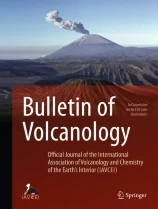 Abstract
Abstract
Peralkaline rhyolites are a rare magma type, typically associated with continental rift settings, and characterised by excess alkalis relative to alumina and a moderate-low viscosity compared to calc-alkaline equivalents. Despite their prevalence in extensional rift settings, such as the Main Ethiopian Rift, eruption dynamics of peralkaline magmas are poorly understood and have never been directly observed. To address the knowledge gap, this study investigates the style and dynamics of the ~ 87 ka explosive eruption at Baricha volcano as a case study. This eruption deposited widespread pumice lapilli fall and pyroclastic density currents, which provide valuable information on pre- and syn-eruptive magmatic processes. By examining the physical and textural features of the eruption products at different stratigraphic levels, we reconstruct eruption dynamics over time. Our analysis reveals that the eruption had three distinct phases, each characterised by different types of tephra fall deposits and associated with different plume and vent conditions. Specifically, deposits of phases 1 and 3 were characterised by massive and well-sorted tephra falls indicative of sustained plume behaviour, while phase 2 deposits were bedded, lithic-rich (i.e. non-juvenile fragments) tephra falls, and pyroclastic density current deposit associated with an unsteady plume and vent-widening phase. The pumice (8–16 mm size fraction) from this eruption is microlite-free, with a bulk density of 400–700 kg m−3 and > 60% total vesicularity. The vesicle size distribution is polymodal, with the most frequent size ranging from 0.001 to 2.4 mm and an estimated vesicle number density of 0.07*107 to 1.6*107 mm−3. The textural observations suggest rapid nucleation occurred during the late phases of magma ascent. Calculated decompression rates of the ascending magma were 0.07–5.6 MPa/s and show a variation between the eruption phases. We conclude that the shift in eruption dynamics alternating between steady to unsteady plume behaviour during the eruption was likely driven by changes in conduit geometry, lithic abundance of the eruptive mixture, decompression rate, and fresh magma injection.
